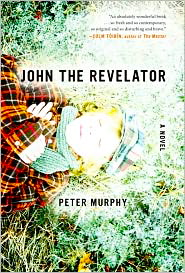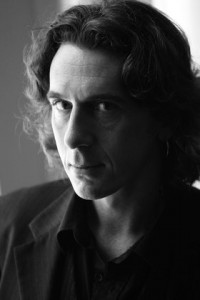“Who’s that writin’? John the Revelator….”–American folk song
An “Irish go thic” novel with dark, religious overtones, John the Revelator by Peter Murphy is set in rural southeast Ireland, where the author himself grew up. The “revelator” of the title, “someone who reveals divine will,” is a boy named John Devine, for the “beloved disciple,” the only one of the apostles who escaped martyrdom, and the patron saint of writing. Born to an exceptionally religious single mother, a house cleaner, John’s childhood seems relatively normal, despite his poverty, though he is pre-occupied with worms. He has nightmares in which he combines his daily life and his worries into horrific tales involving crows. By the age of fifteen, however, John is “content with his own company,” and not terribly rebellious.
thic” novel with dark, religious overtones, John the Revelator by Peter Murphy is set in rural southeast Ireland, where the author himself grew up. The “revelator” of the title, “someone who reveals divine will,” is a boy named John Devine, for the “beloved disciple,” the only one of the apostles who escaped martyrdom, and the patron saint of writing. Born to an exceptionally religious single mother, a house cleaner, John’s childhood seems relatively normal, despite his poverty, though he is pre-occupied with worms. He has nightmares in which he combines his daily life and his worries into horrific tales involving crows. By the age of fifteen, however, John is “content with his own company,” and not terribly rebellious.
It is not until he meets Jamey Corboy, a sixteen-year-old, that he develops a real friendship. Jamey, far more adventurous, introduces John to heavy drinking, smoking, and a willingness to flout convention. Hanging out with bikers and toughs, Jamey has participated in a robbery, but he is also an intellectual and a fine creative writer who shares his full-length stories with John and the reader. Often scatological in tone, they reflect the spirit of Rimbaud, Jamie’s favorite author, who produced his best-known work while still a teenager. Jamey plans to make a film called “Merde a Dieu.”
 At this point, halfway through the book, John resembles teenagers around the world, though perhaps a bit more introspective. The novel, until now, is well organized and exceptionally well written, with unique characters and a setting which allows the author to plumb the myths, folklore, and beliefs of rural Ireland. Every detail counts and relates to every other detail, and the author obviously has a big picture in mind for his themes. The turning point, however, suddenly introduces dramatic new elements which many readers will not be prepared for–changing what might have been an unusual coming-of-age novel with a provocative setting into a fast-paced horror novel, filled with violent details which many readers will find revolting.
At this point, halfway through the book, John resembles teenagers around the world, though perhaps a bit more introspective. The novel, until now, is well organized and exceptionally well written, with unique characters and a setting which allows the author to plumb the myths, folklore, and beliefs of rural Ireland. Every detail counts and relates to every other detail, and the author obviously has a big picture in mind for his themes. The turning point, however, suddenly introduces dramatic new elements which many readers will not be prepared for–changing what might have been an unusual coming-of-age novel with a provocative setting into a fast-paced horror novel, filled with violent details which many readers will find revolting.
The novel suffers significantly, in my opinion, from this shift in tone. Though the author does try to keep his themes (especially the spiritual vs. the profane) intact as his teenage characters and their families suffer through crises, the book ultimately lacks coherence. It divides into two seemingly separate genres with little correlation between them except for the superficial identities of the characters, the setting, and the author’s motifs. Significantly, one of the characters does not remember anything that happens during the turning point, in which he participates, perhaps a “way out” for the author, who would have had a difficult time justifying this unexpected shift in character development, point of view, and tone. Parts of the book are unforgettable, and author Peter Murphy has aimed high, with important themes, vibrant imagery, unique characters, and local color galore. I just wish that the second half of the book had been as tight and well integrated as the first half and that the author had developed his characters more fully before he included a crisis point that seemed to come almost from out of the blue.
Notes: Author’s photo: http://www.faber.co.uk
See Murphy’s own video promo for this book: http://www.youtube.com
The author’s website: http://www.myspace.com
A wacky interview with Murphy: http://www.faber.co.uk
